VW Beetle History (1938-2003)
Article by Mark Trotta
In addition to being the most recognizable car on the road, the air-cooled, rear-engine VW Beetle is the fourth highest-selling automobile of all time. During it's original 65-year production run, more than 21 million Beetle's were built world-wide.
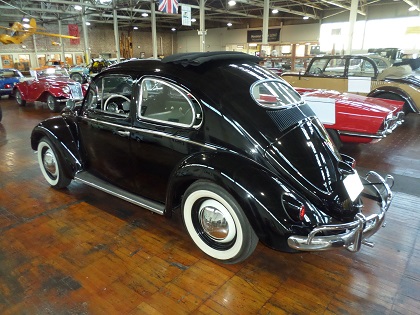
In German, "volks wagen" literally means "people's car".
Origins
In the 1930s, Dr. Ferdinand Porsche started with a steel platform chassis, then added four-wheel independent torsion-bar suspension. The rear-engine platform gave excellent traction, as well as effortless steering.
Body Shape
Styled by Austrian designer Erwin Komenda, the shape of the Beetle was for strength, not looks--a curved piece of metal has more strength than a flat one does. It's odd shape led to it's nickname; the Bug.
The body attaches with eighteen bolts to the chassis, which features a central structural tunnel. The small two-door car could accommodate four passengers while providing storage under the front hood and behind the rear seat.
The flat-four engine displaced 985cc and produced 23.5 horsepower. Transmission was a four-speed manual unit.
Air-Cooled Advantages
Although less powerful than other cars in its class, the engine was simple, economical, and easy to repair. Air-cooled engines do not have water pumps, thermostats, hoses, or a radiator, so it's weight is much lighter than a comparable water-cooled engine.
**********************
Volkswagen During World-War-Two
In January of 1938, the German military approached Volkswagen with specifications for a new vehicle. At this time, the rear-engine Beetle was already in development.
Kubelwagen
Based on the Beetle chassis, the Kubelwagen ("tub car") was lightweight and operable both on- and off-road. Since the body was not a load-bearing part of the structure, the chassis could receive dozens of configurations and modifications for different needs. Many variants included troop transport, radio car, reconnaissance vehicle, and others.
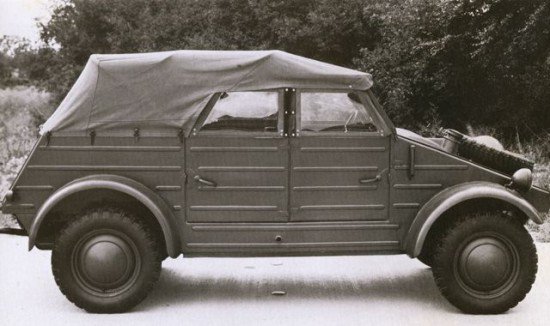
Along with the rear engine, light weight, and a limited-slip differential, Kubelwagens were effective off-road without needing four wheel drive. Being flat and smooth underneath helped keep it moving if the tires sank in muddy conditions.
When Volkswagen production ceased at the end of the war, 50,435 Kubelwagens had been produced.
____________________________________________
____________________________________________
Post WW2 VW Beetle Sales
In parts of Europe, the Beetle enjoyed brisk sales, but early U.S. sales were low. Volkswagen sold just two Beetles in the U.S. during 1949/1950, then 551 cars in 1951, and 601 cars in 1952. Sales gradually increased, particularly during the U.S. economic recession of 1958.
Innovative Advertising
After WW2, there was still animosity against Germany. The company needed to "reinvent" itself if it was to be successful in the U.S. market. The VW Beetle owes much of it's success not only to innovative engineering, but to innovative advertising as well.
Volkswagen searched and found an advertising agency that would create ads focused on building brand advocates. Conceived by the New York agency Doyle, Dane, and Bernbach, the advertising campaign began in 1959 and was one of the best in the world during the sixties.
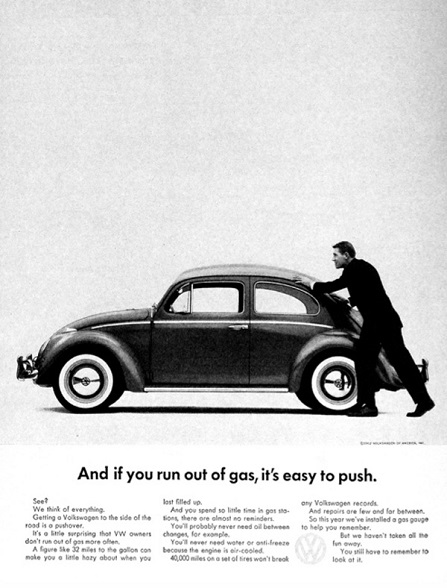
"And if you run out of gas, it's easy to push."
Unlike glamorous, over-the-top American car ads, VW Beetle ads were usually in black and white, and often witty and funny. Clever advertising helped the Beetle to become the biggest selling foreign-made car in America.
1960 VW Beetle Sales
In 1960, the total import car share of the U.S. market was 7.58 percent. With 159,995 sold, the VW Bug was most popular - more than twice that of second-place Renault.
**********************
Volkswagen Beetle 1960-1969
The decade of the sixties saw many changes to the Beetle. In 1960, pull-type outside door handles replaced the push-button type. Engine size increased to 1200cc in 1961. The fuel pump was relocated to right of distributor and the generator was now separate from the block.
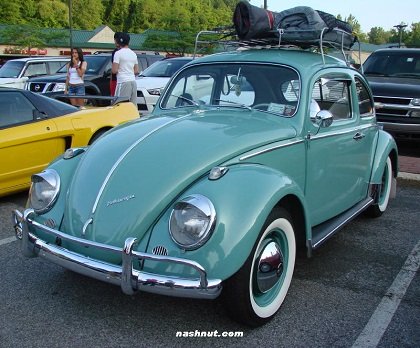
For 1962, a fuel gauge replaced the original reserve tap. Glass tail-light lenses were changed to plastic. The electrical system would remain 6-volts until 1967.
Read: Convert 6-Volt Car to 12-Volts
Early Beetle parts were easily interchangeable from year to year. One Volkswagen dealer in Los Angeles was caught installing 1963 taillights on 1959 Beetles and selling them as new cars.
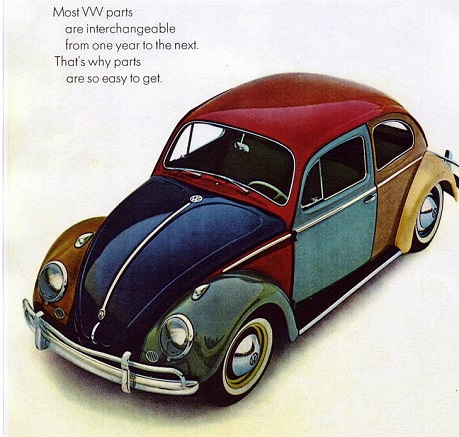
The 1300cc engine was introduced in the 1966 model year. Outer door handles changed from square pushbutton to round pushbutton. Locking front seat backs were introduced.
1967 Beetle
In 1967, the Beetle's engine was enlarged again to 1493cc, now producing 53 horsepower. The 1200cc and 1300cc engines continued to be used outside the U.S. A new dual brake cylinder system was adopted. Other improvements included back-up lights, door lock buttons, and a 12-volt electrical system.
____________________________________________
____________________________________________
Foreign car sales were 10.2% of the U.S. market in 1968. The VW Bug was still the most popular imported car. To comply with U.S. regulations, emission controls started appearing on engines.
1968 Beetle
An external fuel filler was a welcome addition in 1968, as drivers no longer had to lift the trunk-lid to gain access to the gas cap. Larger taillights incorporated the tail, brake, and backup lights into a single unit. Crash safety was improved with a collapsible steering column.
**********************
Beetle Convertible
Easy to fold up and down, the "topless" version of the Beetle was built at the Karmann of Osnabruck facility. Production of the convertible Beetle began in 1953 and continued to be imported to the U.S. until 1979.
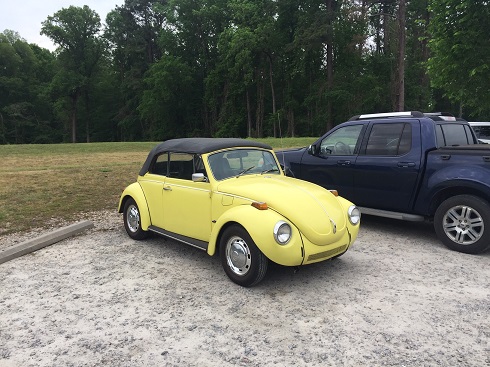
In total, 330,281 classic Beetle convertibles were built.
**********************
Volkswagen AutoStick
Throughout its production, VW produced the Beetle with a four-speed manual transmission. Beginning in 1967 in Europe and 1968 in the United States, a semi-automatic transmission was offered. Marketed as Automatic Stick Shift (also called AutoStick) there was no clutch pedal, but the driver still had to move the shift lever to choose between the three forward gears.
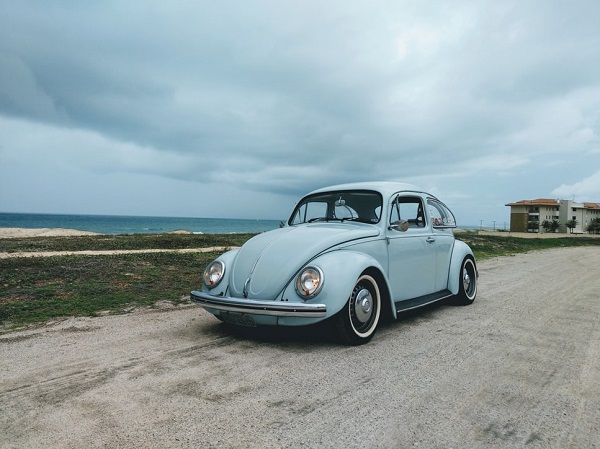
The 1969 Volkswagen Beetle drivetrain was upgraded with double-jointed rear axles which improved handling and stability. A locking steering wheel and fuel door were added, and the trunk release was moved to the glove box. Rear windows on sedans now had a defroster, and a day/night rearview mirror was added.
**********************
Herbie The Love Bug
In 1969, movie-goers were introduced to Herbie The Love Bug, a 1963 VW Beetle who was able to think and drive on his own. Neither Herbie nor driver Jim Douglas ever revealed their secret that #53 was no ordinary car.
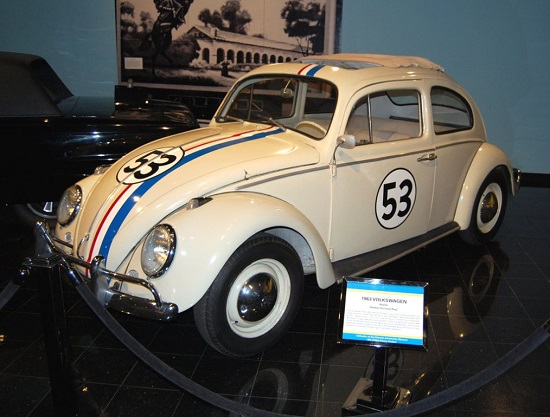
Herbie starred in six Disney movies.
**********************
Super Beetle
Produced from 1971 to 1979, the Super Beetle had new rounder fenders, a larger hood, and a redesigned front valance. Changes were also made to the body and inner fenders to accommodate the mounting of MacPherson front struts. The new instrument panel was padded. A 1600cc engine with dual port cylinder heads provided more power.
An 86% increase of trunk storage space included mounting the spare tire horizontally in a recessed wheel well under the cargo area in the front trunk floor. The jack was moved to under the rear seat and the air pressure powered windshield washer bottle was relocated to the right inner fender. This was the most costly and extensive revision of the Beetle since it was first launched.
____________________________________________
____________________________________________
Starting in 1973, Super Beetles were fitted with a curved windshield, which gave a 42% increase in visibility and improved the aerodynamics of the car. In 1974, the old-style generator was finally replaced with a more efficient alternator.
**********************
Declining Sales
During the seventies, competition from both American and Japanese economy cars hit VW Beetle sales hard. The new Chevy Vega and Ford Pinto offered U.S. car buyers room and fuel economy at a low price. Beetle sales dropped by almost half in 1975, from 791,023 the previous year to only 441,116 this year.
Last Wolfsburg-Production Beetle
German production of the Beetle originally took place at the Wolfsburg plant. The last VW Beetle rolled off the Wolfsburg production line in 1974, allowing production of the new water-cooled, front-engine, front-drive Golf (sold in the U.S. as the Rabbit). Beetle production continued in smaller numbers at other German facilities.
When the cancellation of the original Beetle was finally announced, production was slated to end July 31st 1979, but continued until January of 1980 to fill the thousands of orders received from all over the world.
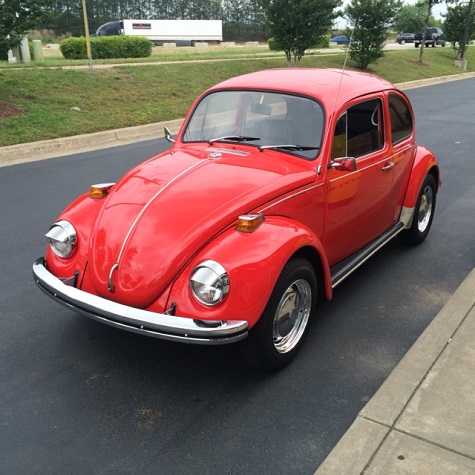
Mainstream production of the Beetle soon shifted to Brazil and Mexico. The last model was produced in Puebla, Mexico, in 2003.
In all, over 21 million Volkswagen Beetles were produced from 1938 to 2003.
**********************
Legacy and Sales
When the 15,007,034th car rolled off the line at Wolfsburg in 1972, the Volkswagen Beetle surpassed the Ford Model T as the longest-running and most-manufactured car in history.
The Beetle remained the world's bestselling vehicle until the late 1990's, when it was surpassed by the Toyota Corolla. Since then, it's fallen a few notches to number four, with 21 million plus sold around the world.
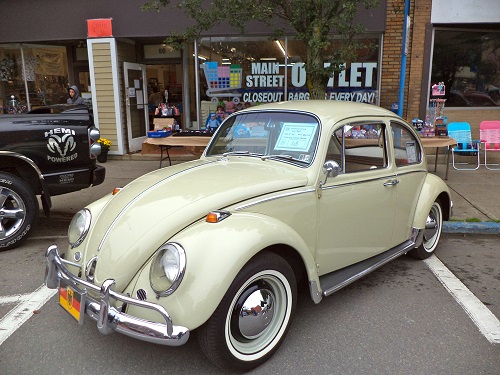
**********************
Karmann Ghia, Dune Buggies, and Kit Cars
The Beetle chassis is the platform for the sporty Karmann Ghia, produced from 1955 through 1975.
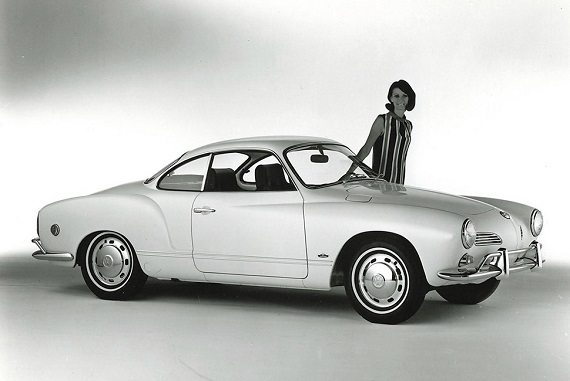
Throughout the decades, the VW Beetle chassis has also been the platform for countless kit cars, including the Bradley GT, Sterling, Sebring, Speedster (Porsche 356), and of course, the dune buggy.
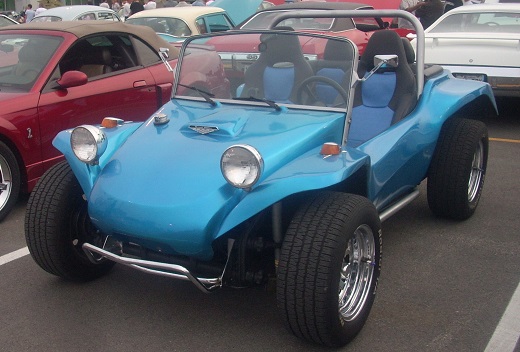
**********************
Related Articles: